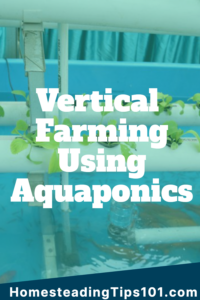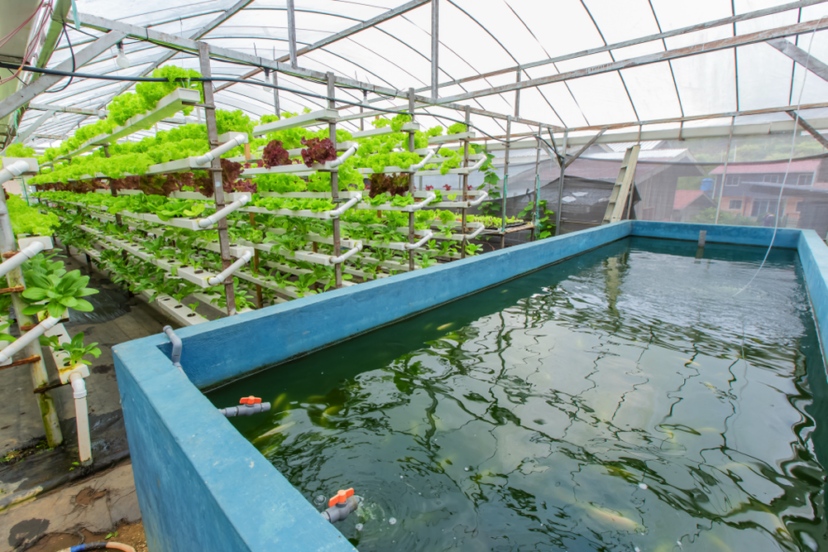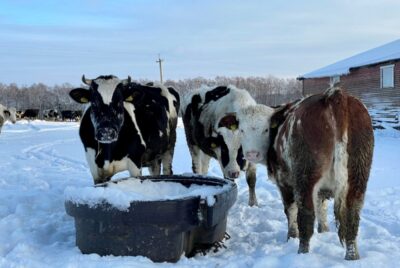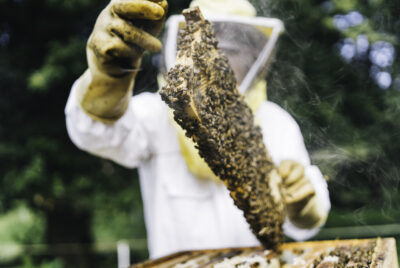Vertical Farming Using Aquaponics
"We may earn a commission from purchases made using our links. Please see disclaimer."
As an enthusiast and advisor of vertical farming using aquaponics, I am excited to share the wonders of this sustainable and innovative farming technique. In this article, we will explore what vertical farming is, the concept of aquaponics, the benefits it offers, and how to set up a successful vertical farm using aquaponics. Whether you’re a seasoned farmer or someone interested in sustainable food production, this guide will provide you with valuable insights and practical suggestions to embark on your vertical farming journey.
Introduction
Vertical farming is a revolutionary approach to agricultural practices that involves growing crops in vertically stacked layers or structures. It offers numerous advantages over traditional farming methods, such as maximizing land utilization, reducing water consumption, and eliminating the need for harmful pesticides. By combining vertical farming with aquaponics, we can further enhance the sustainability and productivity of these systems.
What is Vertical Farming?
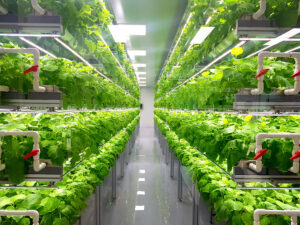 Vertical farming refers to the cultivation of plants in vertically stacked layers, typically in controlled environments such as buildings or greenhouses. This technique makes use of artificial lighting, climate control, and advanced cultivation methods to optimize plant growth. By utilizing vertical space, farmers can grow more crops in a smaller footprint, making it ideal for urban areas with limited land availability.
Vertical farming refers to the cultivation of plants in vertically stacked layers, typically in controlled environments such as buildings or greenhouses. This technique makes use of artificial lighting, climate control, and advanced cultivation methods to optimize plant growth. By utilizing vertical space, farmers can grow more crops in a smaller footprint, making it ideal for urban areas with limited land availability.
Benefits of Vertical Farming
Vertical farming offers a range of benefits that make it an attractive solution for the future of agriculture. Firstly, it allows year-round production regardless of external weather conditions, ensuring a consistent supply of fresh produce. Secondly, it reduces the need for extensive pesticide use, as the controlled environment minimizes the risk of pests and diseases. Additionally, vertical farming reduces water consumption significantly by utilizing advanced irrigation systems and recycling techniques. Finally, it decreases transportation costs and carbon emissions by bringing food production closer to urban centers.
Introduction to Aquaponics
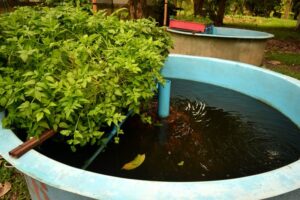 Aquaponics is a symbiotic system that combines hydroponics and aquaculture. It involves cultivating plants and fish together in a mutually beneficial relationship. The fish waste provides nutrients for the plants, while the plants filter and purify the water for the fish. This closed-loop system eliminates the need for traditional soil-based farming and external fertilizer inputs, making it highly sustainable and resource-efficient.
Aquaponics is a symbiotic system that combines hydroponics and aquaculture. It involves cultivating plants and fish together in a mutually beneficial relationship. The fish waste provides nutrients for the plants, while the plants filter and purify the water for the fish. This closed-loop system eliminates the need for traditional soil-based farming and external fertilizer inputs, making it highly sustainable and resource-efficient.
Aquaponics allows homesteaders to raise fish and vegetables together in a small space, utilizing vertical growing methods for maximum yields. This technique supports self-sufficiency through an efficient ecosystem housed right on your homestead property. The shuttered flow between fish and plants reduces water usage and provides natural fertilization for amazing growth. As a homesteader interested in self-reliance, consider bringing this productive method onto your land.
How Does Aquaponics Work?
In an aquaponics system, fish are raised in a tank or pond, and their waste generates ammonia-rich water. This water is then pumped into the plant beds, where bacteria convert the ammonia into nitrites and nitrates, which serve as nutrients for the plants. The plants take up these nutrients, effectively purifying the water, which is then recirculated back to the fish tank. This continuous cycle ensures the well-being of both the plants and the fish, creating a self-sustaining ecosystem.
Aquaponics relies on the natural nitrogen cycle to convert fish waste into plant food conveniently located right next to each other. This closed-loop ecosystem provides the ideal fertilizer for plants delivered directly from fish raised on-site. Homesteaders can create a balanced system supporting vegetables and protein production in a small space.
Advantages of Aquaponics in Vertical Farming
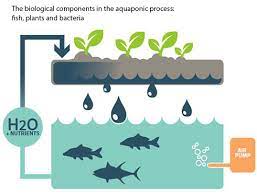 When integrated into vertical farming systems, aquaponics offers several advantages. Firstly, the nutrient-rich water from the aquaponics system can be easily distributed to the vertically stacked plant beds, ensuring optimal growth and productivity. Secondly, the natural filtration process of aquaponics helps maintain water quality and reduces the risk of plant diseases. Furthermore, the fish in the system can provide an additional source of income through their sale or consumption.
When integrated into vertical farming systems, aquaponics offers several advantages. Firstly, the nutrient-rich water from the aquaponics system can be easily distributed to the vertically stacked plant beds, ensuring optimal growth and productivity. Secondly, the natural filtration process of aquaponics helps maintain water quality and reduces the risk of plant diseases. Furthermore, the fish in the system can provide an additional source of income through their sale or consumption.
Overall, aquaponics enhances the efficiency and sustainability of vertical farming. Growing upward expands production capacity allowing homesteaders to raise more food on a small plot of land. The waste from fish fertilizes plants stacked vertically, recycling nutrients efficiently with less water usage. Extra fish harvested provides a continuous protein supply or additional revenue stream right from the homestead.
Setting Up a Vertical Farm with Aquaponics
Unlock the secrets to a thriving vertical farm with aquaponics. Strategically choose a location, harnessing ample light and essential resources. Craft a layout maximizing space and facilitating maintenance. Thoughtfully select plants and fish, tailoring choices to market demands and local regulations. Construct the aquaponics system with precision, and establish a routine for monitoring and maintenance.
To set up a successful vertical farm using aquaponics, several key factors need to be considered.
Choosing the Right Location
Selecting an appropriate location is crucial for the success of your vertical farm. Look for a space that receives ample natural or artificial light and has access to water and electricity. Additionally, consider proximity to markets to minimize transportation costs and ensure timely delivery of your produce.
When siting your homestead aquaponics system, choose a level, sunny area convenient to power and water for operating the pumps and lights. Ensure adequate warmth or indoor heating to maintain ideal temperatures for fish, plants, and bacteria year-round.
Designing the Vertical Farm
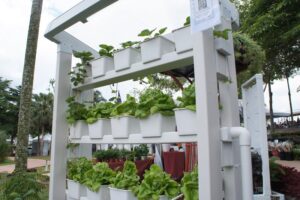 Design your vertical farm layout to optimize space utilization and ease of maintenance. Consider the stacking arrangement, irrigation systems, and space for plant beds, fish tanks, and equipment. It’s important to create an efficient workflow that allows for easy monitoring and maintenance of the system.
Design your vertical farm layout to optimize space utilization and ease of maintenance. Consider the stacking arrangement, irrigation systems, and space for plant beds, fish tanks, and equipment. It’s important to create an efficient workflow that allows for easy monitoring and maintenance of the system.
Utilize vertical space to maximize production in a compact area through stacking beds or towers with optimal light exposure. Arrange components for convenient feeding, harvesting, and equipment access promoting a streamlined system.
Selecting Plants and Fish
Choose plants that are suitable for vertical farming and have high market demand. Leafy greens, herbs, and small fruits like strawberries are popular choices. When it comes to fish, select species that thrive in aquaponics systems, such as tilapia or trout. Consider market preferences and local regulations when making these choices.
When selecting plants and fish, choose hardy varieties that tolerate fluctuating home aquaponics conditions. Favor productive plants with quick crop cycles like lettuces, herbs, or microgreens. Hearty fish like tilapia grow well, breed in tanks, and provide mild meat.
Building the Aquaponics System
Constructing the aquaponics system involves setting up the fish tanks, plant beds, and the necessary plumbing and filtration systems. Ensure proper water circulation, aeration, and temperature control to create an ideal environment for both the fish and plants. Seek guidance from experts or experienced aquaponics farmers if needed.
Building aquaponics combines traditional gardening and fishkeeping using pumps to link the system. Ensure adequate biofiltration and test water quality frequently while colonies establish. Getting started guides or aquaponics kits provide homesteaders everything required for constructing this productive ecosystem in their backyard.
Monitoring and Maintenance
 Regular monitoring of water quality, nutrient levels, and the health of both plants and fish is crucial. Keep a close eye on pH levels, ammonia, nitrite, and nitrate concentrations, and adjust them as necessary. Perform routine maintenance tasks such as cleaning filters, removing dead leaves, and inspecting equipment to prevent any issues.
Regular monitoring of water quality, nutrient levels, and the health of both plants and fish is crucial. Keep a close eye on pH levels, ammonia, nitrite, and nitrate concentrations, and adjust them as necessary. Perform routine maintenance tasks such as cleaning filters, removing dead leaves, and inspecting equipment to prevent any issues.
Home aquaponics systems require attentive tracking of conditions to preserve balance between fish, plants, and bacteria. Test and record water chemistry twice weekly, removing dead material while pruning and harvesting crops. Develop a schedule for screening, cleaning, and replacing system components to uphold productivity long-term.
Maximizing Efficiency
To maximize the efficiency of your vertical farm, implement smart technologies and automation where possible. Utilize sensors, control systems, and data analytics to optimize resource usage, lighting schedules, and water management. This can help reduce operational costs and improve overall productivity.
Employing remote sensors or monitoring equipment enables precise management sustaining ideal equilibrium within the home aquaponics environment. Smart controls administer lighting and water circulation attaining robust growth with minimal effort.
Scaling Up Vertical Farming with Aquaponics
Once you have successfully set up and mastered the basics of vertical farming with aquaponics, you may consider scaling up your operations. Expand your facility by adding more growing layers or increasing the size of your existing vertical farm. However, ensure you have the necessary resources, infrastructure, and market demand to support the expansion.
As your homestead aquaponics system thrives, contemplate increasing production incrementally to supply additional food and revenue. Expand by adding extra vertical beds, larger tanks, more efficient equipment or supplementary light sources as justified by rising output.
Challenges and Solutions
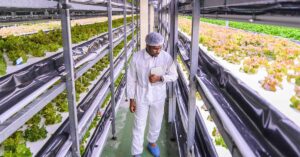 While vertical farming with aquaponics offers numerous advantages, it also presents some challenges. Maintaining the delicate balance of the aquaponics system requires careful attention to water quality, nutrient levels, and temperature control. Additionally, managing pests and diseases in a controlled environment can be challenging.
While vertical farming with aquaponics offers numerous advantages, it also presents some challenges. Maintaining the delicate balance of the aquaponics system requires careful attention to water quality, nutrient levels, and temperature control. Additionally, managing pests and diseases in a controlled environment can be challenging.
However, with proper knowledge, monitoring systems, and proactive measures, these challenges can be overcome to achieve a successful and sustainable vertical farm. Operating a balanced home aquaponics ecosystem demands attentive tracking of conditions and prompt mitigation of problems. Gain expertise through courses or networking to navigate technical issues. Implement IPM practices immediately at early signs of infestation within the enclosed environment before major damage occurs.
Conclusion
Vertical farming using aquaponics is a game-changer in the world of agriculture. It allows us to grow fresh produce in urban areas, reduce environmental impact, and ensure a consistent food supply. By combining the benefits of vertical farming and aquaponics, we can create sustainable and resource-efficient systems that address the challenges of traditional farming. I hope this article has provided you with valuable insights and inspiration to embark on your own vertical farming journey.
FAQs
1. Can vertical farming with aquaponics be profitable?
Yes, vertical farming with aquaponics can be profitable. By carefully selecting high-demand crops and managing operational costs, farmers can generate a consistent income. Additionally, the sale of fish and value-added products can contribute to profitability.
2. Is vertical farming with aquaponics suitable for home gardeners?
Yes, vertical farming with aquaponics can be adapted for home gardening. Smaller-scale systems can be set up indoors or in limited spaces, providing a fresh and sustainable source of food for home gardeners.
3. What are the main advantages of aquaponics over traditional soil-based farming?
Aquaponics eliminates the need for soil, reduces water consumption, minimizes the use of pesticides, and creates a self-sustaining ecosystem. It offers higher crop yields in smaller spaces and allows year-round production, independent of external weather conditions.
4. How much water does aquaponics save compared to traditional farming?
Aquaponics can save up to 90% of water compared to traditional farming methods. The recirculating system continually reuses water, minimizing waste and optimizing water usage.
5. Are there any limitations or constraints to vertical farming with aquaponics?
Vertical farming with aquaponics requires careful monitoring and maintenance to ensure optimal conditions for plant and fish health. Additionally, initial setup costs and the learning curve associated with aquaponics can be considered as potential constraints. However, with proper planning and knowledge, these limitations can be overcome.
